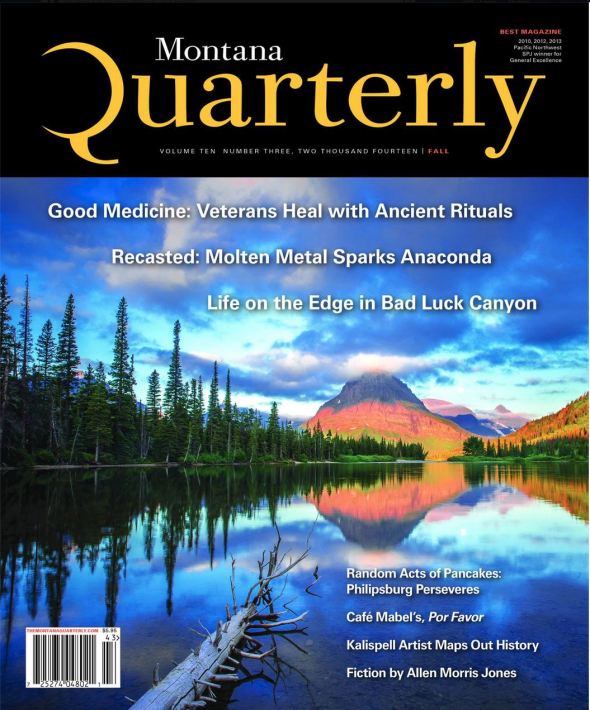Breaking my own photography rules pays off with this Montana photograph
I arrived at the lake. Calm morning, no wind, perfect reflection, great light, nice color, no people, just what makes my office so desirable! But wait. The clouds. The clouds were covering the peak of Sinopah Mountain. Oh shit, now what? I was ready to pack it in and go home. I'm one for breaking photography rules. I do it all the time just to keep my senses about me, and to evaluate whether my own rules still apply. Most of the time, I've set my own rules because I need to be efficient, focused, and I can not afford to waist time shooting photographs that I know I can not sell. My rule, "you can't sell a photograph of a mountain with no peak." In this case, that rule that I've learned over and over again, just went out the door - sort of.
This Montana photograph of Sinopah Mountain, in the Two Medicine Valley of Glacier National Park captured in 2012 show's me how wrong my rule was and supports my belief in breaking my own rules from time to time. Up until this photograph appeared on the fall 2014 cover of, "Montana Quarterly" magazine (you should subscribe to this magazine if you have any interest in Montana), I had always said to myself, and the people who hire me to teach them outdoor and landscape photography, "you MUST have the peak of the mountain in the photograph."
Well, as it turned out, Scott McMillion, the owner and editor of Montana Quarterly Magazine thought the image worked well enough to put it on the cover of his magazine - thank you Scott McMillion! I have photographed mountains for many years. All sorts of mountains in just about every lighting situation you can imagine. I've photographed mountains all across the country and over the years I've learned - or so I thought - that I'll never sell a photograph of a mountain with no peak.

Mountain peaks are really what distinguish one particular mountain over another. I've waited for hours for clouds to clear from peaks before photographing them, even when the light was good it just seemed to me, that a mountain without a peak is like a human without a head. If you look closely at mountains, you'll find that they are almost like snow flakes, no two of them are exactly the same. So, it was my thought that in order to present a mountain, the peak, the most distinguishing feature of a mountain must be in the image, even if most of the rest of it is not. Moreover, I've look at thousands of my own mountain photographs, and felt that in almost every case where the peak was absent, the photograph did not work. I still feel that way - sort of.
This photograph of Sinopah Mountain reflecting in Pray Lake, in Glacier National Park, is a perfect example of how a photograph of a mountain, without a peak can work. Do you know why it works?
What are your thoughts? Do you have examples of photographs of mountains where you've either cropped the peak, or it was there but not visible? Or maybe you've seen other photographs of mountains with no peak that you think work? What do you think? Does this photograph of Sinopah Mountain, in Glacier National Park work? Scott thought so, and I agree with him.
Tony Bynum
Montana Based Photographer
